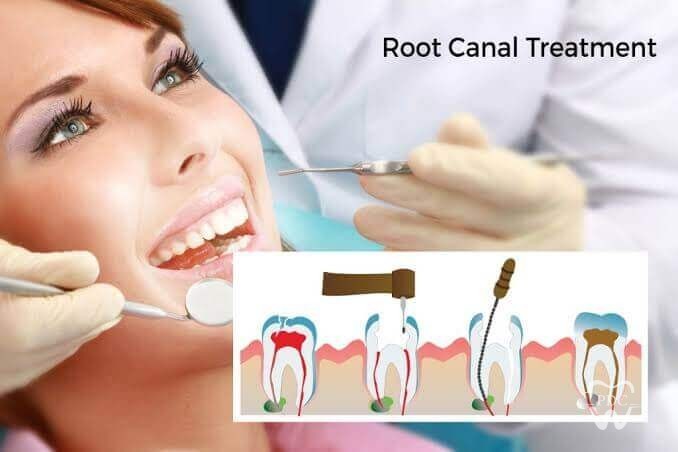A root canal treatment (RCT) is recommended to repair and save a badly damaged or infected tooth instead of removing it. The procedure involves removing the damaged area of the tooth (the pulp- nerve and blood supply of the tooth) and cleaning and disinfecting it followed by filling and then finally sealing it. The common causes affecting the pulp of the tooth are a cracked tooth, a deep cavity, repeated dental treatment to the tooth or trauma to it. the term ‘root canal’ comes from cleaning the canals inside the tooth’s root.
Once the root canal treatment is done, a cap or a crown is fitted onto to the tooth in order to protect it from fracturing once the root canal treatment is done. As once the treatment is done, the tooth becomes weak and to protect it, placing a cap/crown is mandatory.
Does root canal treatment hurt?
Decades ago, root canal treatments were painful. Today, with various dental advances and local anesthesia, most people have little if at all no pain with root canal treatment.
When Is root canal treatment needed?
Usually, root canal treatments are recommended or needed when there is an infection deep within the tooth. The pulp inside the tooth can become infected with bacteria because of an injury or because of a severe, untreated cavity. Without treatment, the infection can become severe enough that the tooth has to be removed. If your dentist has recommended the treatment, here is a step-by-step guide of what you can expect during and after the procedure.
How a root canal treatment is performed: Step by Step
A root canal is essentially a four-step process. Treatment is usually performed over two visits.
- Using a needle, the dentist administers local anesthesia to numb the tooth. It’s common to feel a prick in the area when the needle goes in.
- Your dentist will then use very small tools, such as a small drill, to access the inside of the tooth by creating an opening in the top portion of the tooth. Next, he will use small files to clear away the damaged and diseased pulp from the inside of the tooth. He will also use the files to shape the inner chamber of the tooth and root and might irrigate the chamber with water to wash away any remaining pulp. He will also put an antimicrobial solution in the chamber to kill any remaining bacteria and reduce the risk for further infection.
- Once the chamber is thoroughly cleaned and dried, the endodontist will fill it. A rubber-like material called gutta percha is often used. Your dentist will close the opening in your tooth with a temporary filling, while you wait for the permanent crown.
After a few weeks, your dentist will finish the treatment by placing a permanent crown or a similar type of restoration on the top of the tooth. Depending on the condition of your natural tooth, he may need to place a small supporting post inside the root chamber, to make the crown or restoration more stable.
After the procedure
Taking good care of your teeth and gums is a must after a root canal treatment. You might need to schedule an additional visit with your dentist to X-ray the treated tooth and to make sure that all signs of infection are gone. In addition, twice-yearly dental cleanings and examinations are advised. It is important to keep up a good oral care routine at home, including brushing twice a day with a toothpaste, which helps lock in calcium in teeth and protects them from cavities. With care and attention, a diseased tooth treated with a root canal therapy can stay healthy for the rest of your life.



